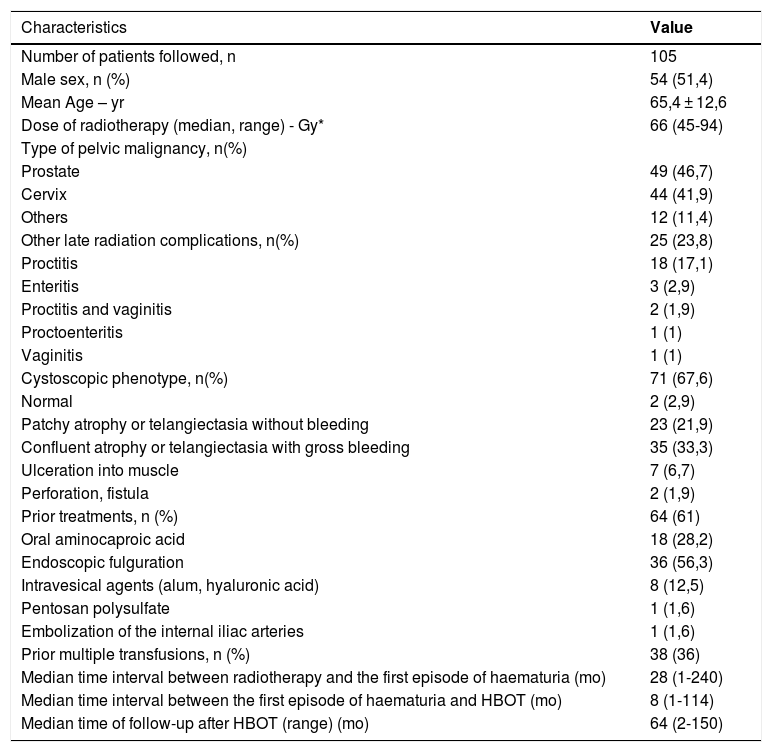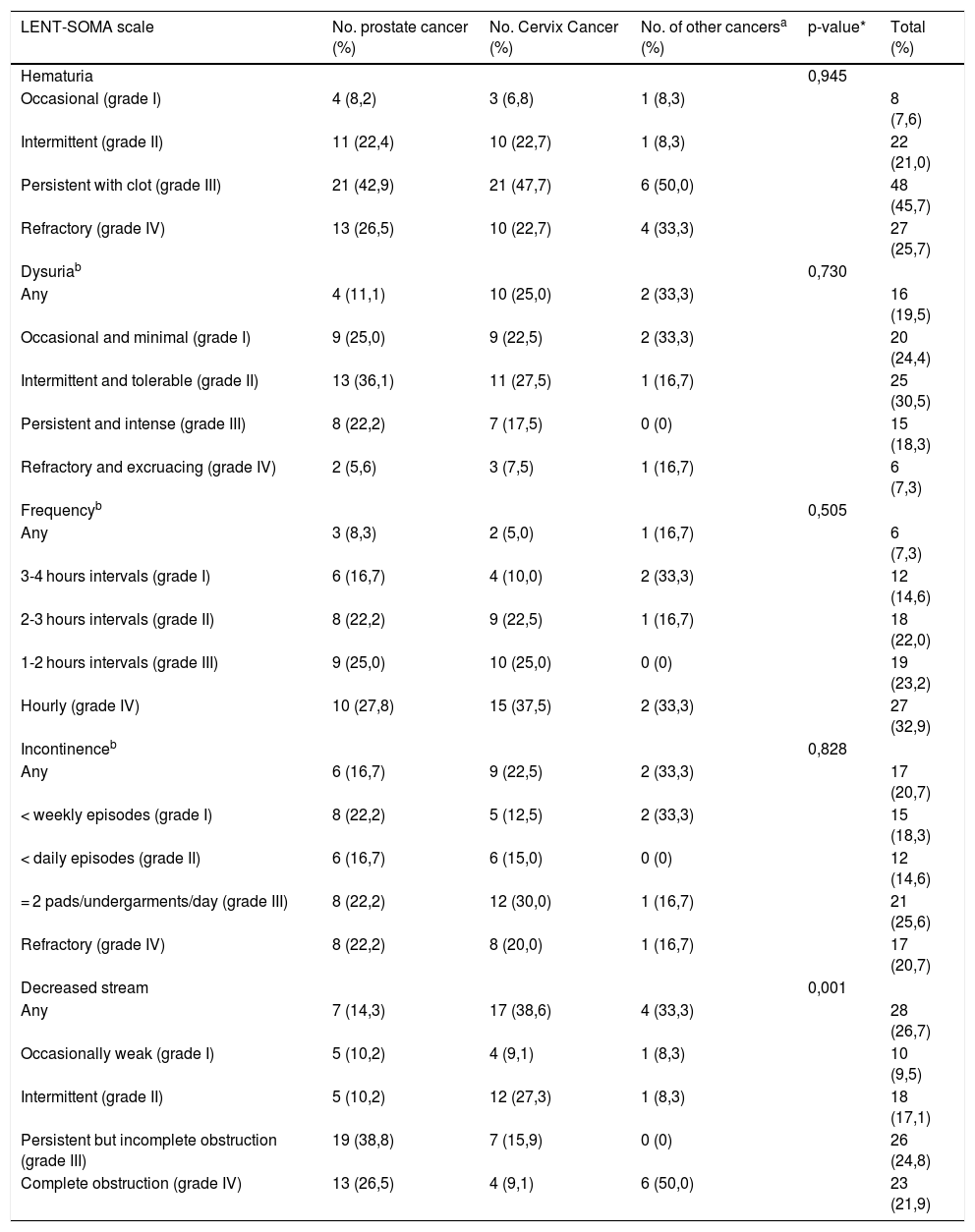Bladder complications may be seen in up to 12% of patients treated with pelvic irradiation. Hyperbaric oxygen therapy (HBOT) is an option for the management of radiation-induced hemorrhagic cystitis (RIHC). The aim of this study was to evaluate the efficacy of HBOT in radiation cystitis and to identify the predictive factors for a successful outcome.
Material and MethodsWe retrospectively reviewed 105 patients diagnosed with RIHC which were treated with HBOT between 2007 and 2016 in our institution. Patients received 100% oxygen in a multiplace hyperbaric chamber at 2.4 atm for 80 min. All patients fulfilled a questionnaire documenting symptom severity pre-HBOT and at the end of the follow-up period.
ResultsAfter a median of 40 HBOT sessions, there was success rate of 92,4% in the control of hematuria. During our follow-up period (median of 63 months) 24,7% patients presented with recurrence of hematuria. The mean score of the questionnaire-assessed variables: dysuria, urinary frequency and hematuria, was significantly lower after the follow-up period (p < 0,05).
Our data shows that the sooner HBOT is delivered after the first episode of hematuria, better response rates are achieved and lower recurrences concerning hematuria were registered (p < 0,05). No serious complications were observed.
ConclusionsOur results support the safety and long-term benefits of HBOT on RIHC and other distressful bladder symptoms, which represents an expected improvement of quality of life in our patients
Alrededor del 12% de los pacientes tratados con radioterapia pélvica desarrollan complicaciones en la vejiga. La terapia de oxígeno hiperbárico (TOHB) es una opción para el manejo de la cistitis hemorrágica inducida por radioterapia (CHIR). El objetivo de este estudio fue evaluar la eficacia de la TOHB para tratar la cistitis por radioterapia e identificar factores predictivos para un resultado exitoso.
Material y métodosRevisamos retrospectivamente 105 pacientes diagnosticados con CHIR que recibieron un tratamiento de TOHB entre 2007 y 2016 en nuestro centro. Los pacientes recibieron oxígeno al 100% en una cámara hiperbárica multiplaza a 2,4 ATA durante 80 minutos. Todos los pacientes cumplimentaron un cuestionario en el que se documentaba la gravedad de los síntomas previos a TOHB y tras el período de seguimiento.
ResultadosDespués de una media de 40 sesiones de TOHB, hubo una tasa de éxito del 92,4% en el control de la hematuria. Durante nuestro período de seguimiento (mediana de 63 meses), el 24,7% de los pacientes presentaron recurrencia de la hematuria. La puntuación media de las variables evaluadas en el cuestionario –disuria, frecuencia urinaria y hematuria– fue significativamente menor después del período de seguimiento (p < 0,05).
Nuestros datos muestran que cuanto antes se administre la TOHB después del primer episodio de hematuria, se logran mejores tasas de respuesta y se registran menores recurrencias en relación con la hematuria (p < 0,05). No se observaron complicaciones graves.
ConclusionesNuestros resultados apoyan la seguridad y los beneficios a largo plazo de la TOHB para la CHIR y otros síntomas molestos de la vejiga, lo que supondría una mejora en la calidad de vida de nuestros pacientes.










